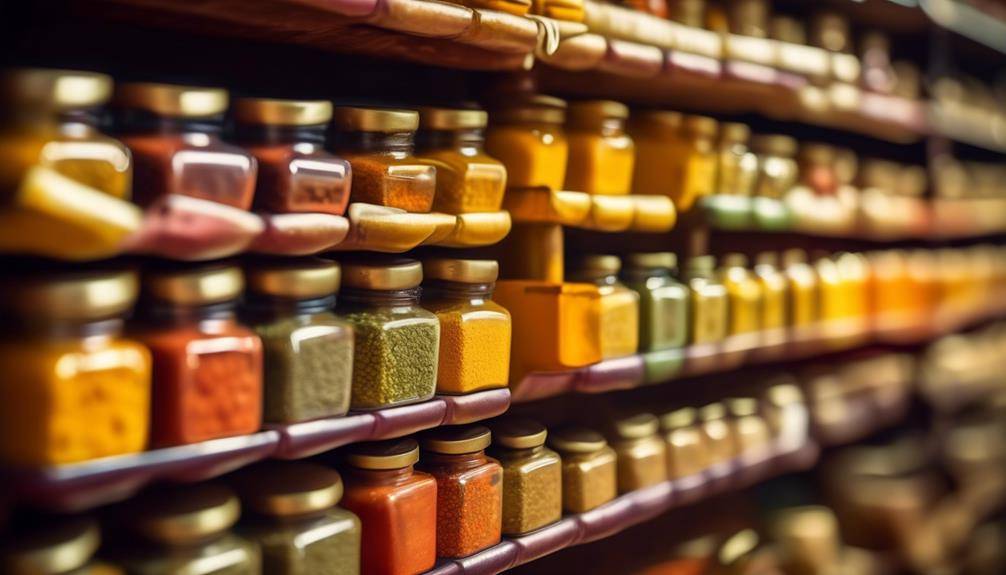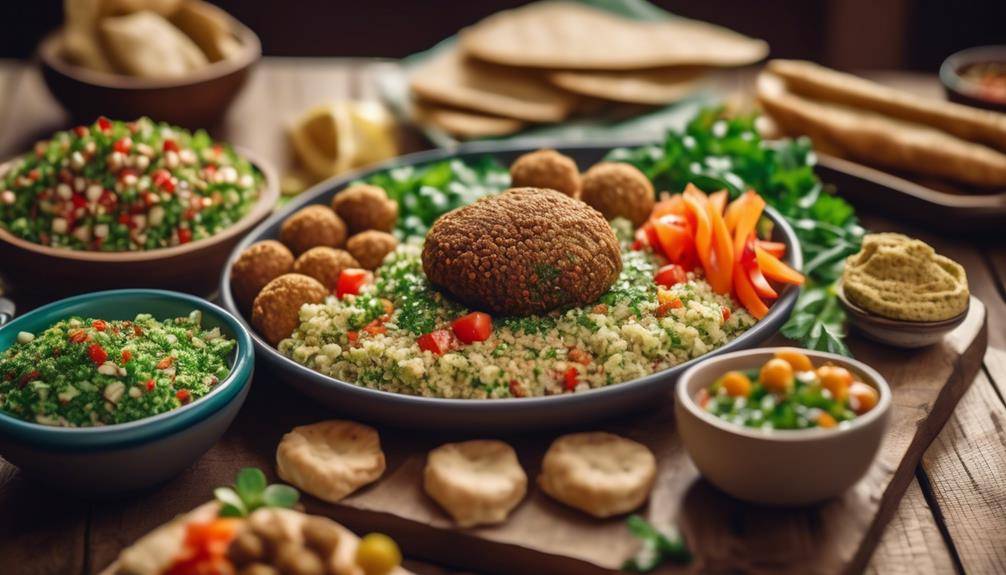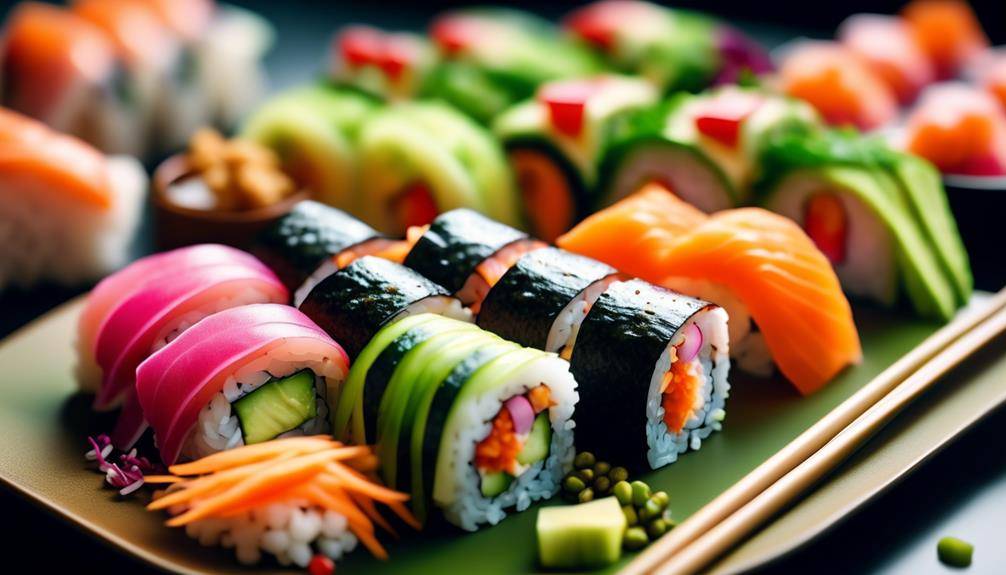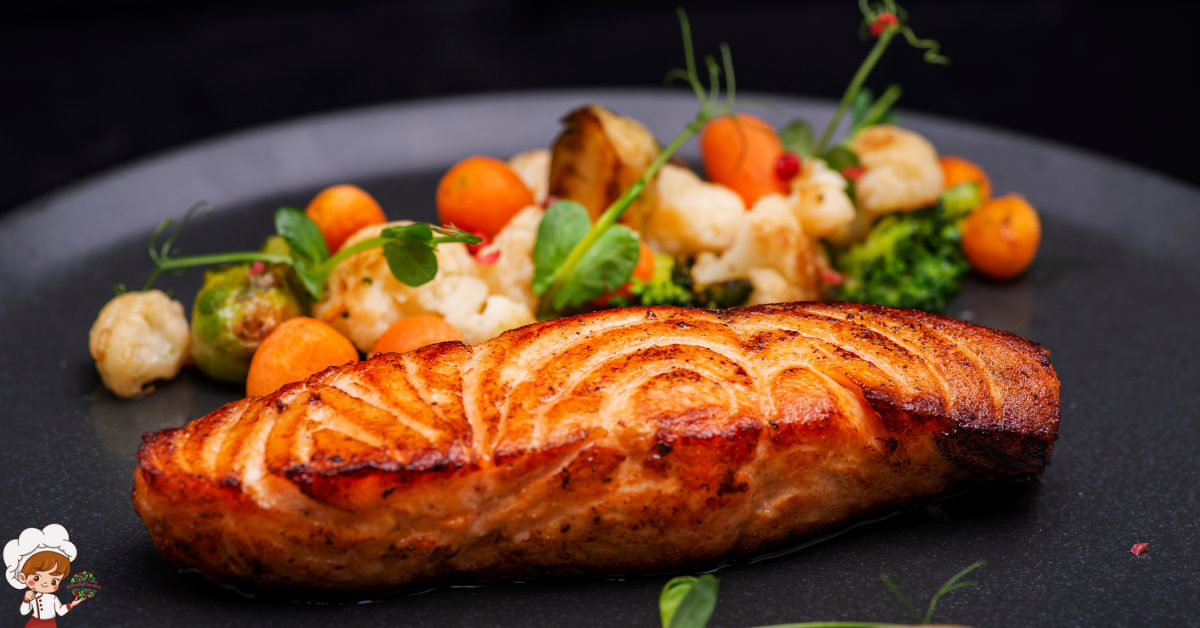The Amazing Mexican Food History And Cultural Significance
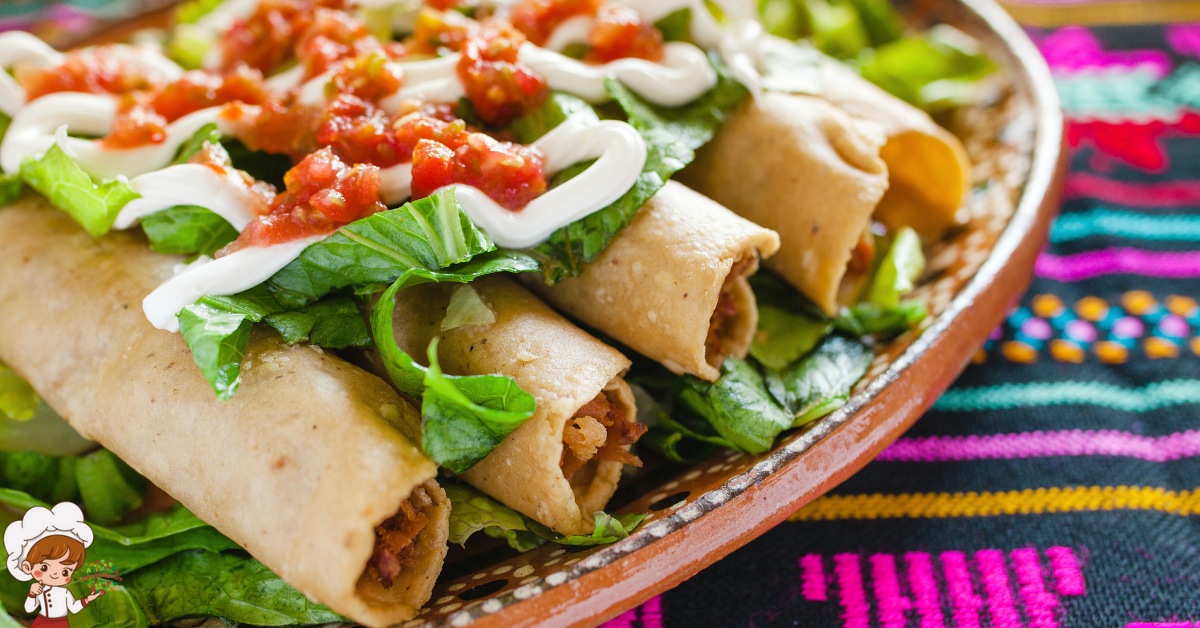
Mexican Food History; Are you hungry for a taste of history and culture? Dive into the rich tapestry of Mexican food, where each dish tells a story and every bite takes you on a journey. From the ancient culinary traditions of the Aztecs and Mayans to the vibrant flavors influenced by Spanish colonization, Mexican cuisine is a fusion of diverse cultures.
Discover the indigenous ingredients and the sacred role of corn in Mexican cooking. Explore the evolution of street food and the regional variations that make each dish unique. Learn about traditional cooking techniques passed down through generations. Experience the joyous celebrations and festivals where food is at the heart of Mexican culture. And witness the global impact of modern Mexican cuisine. Get ready to savor the history and cultural significance of Mexican food.
Ancient Mexican Culinary Traditions
Explore the ancient Mexican culinary traditions that have shaped the vibrant and diverse cuisine of the region. The influence of ancient civilizations can be seen in the culinary innovations that have been passed down through generations. From the Mayans to the Aztecs, these civilizations left a lasting impact on Mexican cuisine.
The Mayans were known for their advanced agricultural practices and their use of ingredients such as corn, beans, and chilies. They developed innovative cooking techniques, such as grinding corn into masa and using it to make tortillas. This culinary innovation laid the foundation for many traditional Mexican dishes that are still enjoyed today.
The Aztecs built upon the culinary traditions of the Mayans and introduced new ingredients and flavors to Mexican cuisine. They cultivated crops such as tomatoes, avocados, and chocolate. The Aztecs also developed new cooking techniques, such as boiling and grilling, which added depth and complexity to their dishes.
These ancient civilizations not only influenced the ingredients and cooking techniques of Mexican cuisine, but also the cultural significance of food. Food was seen as a way to connect with the gods and was often used in religious ceremonies. The Mayans and Aztecs believed that certain foods had mystical properties and could be used for healing and spiritual purposes.
Today, the ancient Mexican culinary traditions continue to be celebrated and preserved. Mexican cuisine is known for its bold flavors, vibrant colors, and rich history. From the tamales of the Mayans to the mole sauces of the Aztecs, the culinary innovations of these ancient civilizations have left a lasting legacy on Mexican cuisine.
Influence of Spanish Colonization on Mexican Food
When the Spanish colonized Mexico, they introduced new ingredients and culinary techniques that greatly influenced Mexican food. The Spanish influences on Mexican cuisine during the colonial era are still evident and celebrated today. Here are some key aspects of this culinary transformation:
- New ingredients: The Spanish brought a wide range of ingredients that were previously unknown in Mexico. These included various meats such as pork and beef, as well as dairy products like milk and cheese. They also introduced different types of fruits and vegetables, such as tomatoes, onions, and garlic. These ingredients formed the foundation of many traditional Mexican dishes.
- Fusion of flavors: The Spanish introduced their own cooking techniques and flavor combinations, which blended with the existing indigenous cuisine. This fusion resulted in the creation of unique dishes that combined elements from both cultures. For example, the use of spices like cumin and cinnamon became prevalent in Mexican cooking, adding depth and complexity to the flavors.
- Influence on cooking methods: The Spanish brought with them new cooking techniques, such as frying and baking, which were not commonly used in ancient Mexican culinary traditions. These methods opened up new possibilities for preparing and presenting food, leading to the development of iconic dishes like chiles rellenos and pan dulce.
- Colonial era culinary traditions: The Spanish colonization also led to the establishment of culinary traditions that are still cherished in Mexico today. For instance, the tradition of making tamales during Christmas originated from the Spanish practice of making sweet and savory tamales during religious festivals.
- Regional variations: The Spanish influences on Mexican cuisine varied across different regions of Mexico. Each region adapted and incorporated the new ingredients and techniques to suit their local tastes and preferences. This resulted in the creation of diverse regional cuisines, each with its own distinct flavors and dishes.
The Spanish colonization of Mexico had a profound impact on Mexican food, shaping it into the vibrant and diverse culinary tradition it is today. The fusion of indigenous and Spanish ingredients, flavors, and cooking techniques has given rise to a rich tapestry of flavors and dishes that continue to delight palates around the world.
Indigenous Ingredients and Flavors
As you explore the rich history of Mexican cuisine, you will discover the deep-rooted influence of ancient culinary traditions and the vibrant flavors of indigenous ingredients. These ingredients, such as corn, chili peppers, and cacao, have been integral to Mexican cooking for centuries, shaping the unique and diverse flavors found in traditional dishes. The cultural influences on Mexican cuisine have resulted in a culinary heritage that is both authentic and deeply connected to the land and people of Mexico.
Ancient Culinary Traditions
First, delve into the rich history of Mexican cuisine by discovering the numerous indigenous ingredients and flavors that have shaped its ancient culinary traditions. These ancient recipes and culinary practices have had a profound cultural significance, reflecting the deep connection between food and identity in Mexican culture. Here are some key aspects of ancient culinary traditions in Mexico:
- Corn: The sacred crop of the ancient Mayans and Aztecs, corn continues to be a staple ingredient in Mexican cuisine, used in tortillas, tamales, and other dishes.
- Chiles: From mild to fiery, chiles add depth and complexity to Mexican dishes, showcasing the diverse range of flavors available.
- Cacao: The ancient Mexicans revered cacao as both a currency and a food. Today, it is used in traditional drinks like hot chocolate and mole sauce.
- Avocado: Native to Mexico, avocados have been enjoyed for centuries, used in guacamole and as a garnish for various dishes.
- Epazote: This herb with a distinctive flavor has been used since ancient times to season beans and other dishes.
These indigenous ingredients and flavors have not only influenced the cuisine but have also become an integral part of Mexican culture, reflecting the rich heritage and culinary traditions of the ancient civilizations that once thrived in the region.
Flavorful Indigenous Ingredients
Continue exploring the rich history of Mexican cuisine by delving into the flavorful indigenous ingredients that have shaped its culinary traditions. Indigenous farming practices have played a crucial role in the development of Mexican cuisine, as they have provided a diverse range of ingredients that contribute to its unique flavors. From maize, or corn, which forms the basis of many traditional Mexican dishes, to chili peppers, tomatoes, beans, and cacao, these ingredients have been cultivated by indigenous communities for centuries.
Through their farming practices, indigenous people have not only sustained themselves but also preserved their cultural heritage. Today, these ingredients continue to be celebrated and incorporated into Mexican cuisine, showcasing the deep connection between food and cultural identity. By embracing these indigenous flavors, Mexican cuisine honors its rich history and ensures the preservation of its cultural heritage through food.
Cultural Influences on Cuisine
Explore the cultural influences on Mexican cuisine through the incorporation of indigenous ingredients and flavors. The culinary landscape of Mexico is a vibrant tapestry woven together by centuries of cultural fusion, influenced by various indigenous communities and the arrival of immigrants. As you savor each bite of Mexican food, you can taste the rich history and diverse flavors that have shaped its identity.
- Indigenous Ingredients: From the ancient Aztecs and Mayans, Mexican cuisine incorporates indigenous ingredients like corn, beans, chili peppers, and chocolate, giving dishes a distinct and bold flavor profile.
- Influence of Immigration: Over time, Mexican cuisine has been influenced by immigration, such as the introduction of spices and cooking techniques from Europe, resulting in a unique blend of flavors.
- Fusion of Flavors: Mexican cuisine is a testament to the fusion of indigenous and immigrant ingredients, creating dishes like mole, a complex sauce combining chili peppers, chocolate, spices, and nuts.
Through its indigenous ingredients and fusion of flavors, Mexican cuisine stands as a testament to the rich cultural heritage and culinary prowess of the Mexican people.
The Role of Corn in Mexican Cuisine
Corn plays a fundamental role in Mexican cuisine, serving as a staple ingredient in countless traditional dishes. From tortillas and tamales to pozole and atole, corn is deeply ingrained in the culinary heritage of Mexico. Beyond its culinary significance, corn holds immense cultural importance, symbolizing sustenance, unity, and ancestral ties for the Mexican people.
Corn as Staple Ingredient
In Mexican cuisine, corn plays a crucial role as a staple ingredient, forming the basis for a wide variety of traditional dishes. Its cultivation dates back thousands of years, with indigenous communities developing sophisticated farming techniques to grow this versatile crop. Corn is not only rich in carbohydrates but also contains essential nutrients like fiber, vitamins, and minerals. Its nutritional value makes it an excellent choice for sustaining a healthy diet.
When it comes to Mexican cuisine, the significance of corn goes beyond its nutritional benefits. It is deeply intertwined with the cultural identity of the country, evoking emotions of nostalgia, heritage, and pride. The aroma of freshly made tortillas, the vibrant colors of corn-based dishes, and the unmistakable taste of masa bring people together, celebrating the flavors of Mexico.
Traditional Corn-Based Dishes
One of the most beloved aspects of Mexican cuisine is its traditional corn-based dishes, which showcase the rich flavors and cultural heritage of the country. Corn has been a staple ingredient in Mexican cooking for thousands of years, and it plays a central role in the creation of many iconic dishes. Traditional corn-based dishes such as tamales, tortillas, and pozole have been passed down through generations, preserving the culinary traditions of Mexico.
These dishes not only provide nourishment but also serve as a cultural touchstone, connecting people to their history and roots. Moreover, corn-based dishes have also witnessed culinary innovation, with chefs and home cooks experimenting with different flavors and techniques. The versatility of corn allows for endless possibilities, resulting in a diverse array of traditional corn-based dishes that continue to delight and satisfy the taste buds of people around the world.
Cultural Importance of Corn
To truly understand the cultural significance of Mexican cuisine, you must recognize the integral role that corn plays in its diverse and vibrant flavors. Corn, or maize, holds immense importance in Mexican culture, not only as a staple crop but also as a symbol of identity and tradition. Here are five reasons why corn is so culturally significant in Mexican cuisine:
- Historical significance: Maize cultivation dates back thousands of years in Mexico, with indigenous civilizations like the Mayans and Aztecs relying heavily on corn as a dietary staple.
- Nutritional value: Corn is a rich source of essential nutrients like fiber, vitamins, and minerals, making it a vital part of the Mexican diet.
- Symbolism: Corn represents fertility, sustenance, and the cycle of life in Mexican culture, reflecting the deep connection between the people and the land.
- Versatility: Corn is used in a variety of forms in Mexican cuisine, from tortillas and tamales to pozole and atole, showcasing its versatility and adaptability.
- Community and tradition: Corn cultivation and preparation are often communal activities, bringing people together and preserving cultural traditions.
The cultural importance of corn in Mexican cuisine cannot be overstated. Its cultivation, symbolism, and use in a wide range of dishes reflect the deep-rooted traditions and rich heritage of Mexican culture.
The Evolution of Mexican Street Food
Exploring the vibrant streets of Mexico, you’ll discover the fascinating evolution of Mexican street food. Over the years, street food in Mexico has undergone significant changes, reflecting the modern trends and tastes of the country. The evolution of street food in Mexico has been influenced by factors such as globalization, urbanization, and changing consumer preferences.
In recent years, there has been a shift towards healthier and more diverse options in Mexican street food. While traditional favorites like tacos, quesadillas, and tamales still dominate the street food scene, vendors have started incorporating modern ingredients and incorporating international flavors into their dishes. For example, you can now find gourmet tacos with fillings like grilled shrimp and chipotle aioli, or vegan-friendly options like jackfruit carnitas.
Another trend in the evolution of Mexican street food is the rise of food trucks and food markets. These mobile vendors offer a wide variety of culinary delights, from traditional Mexican dishes to fusion cuisine. Food trucks have become popular because they allow vendors to experiment with different flavors and offer a unique dining experience. Food markets, on the other hand, provide a one-stop-shop for hungry food enthusiasts, where they can sample a variety of dishes from different vendors in one place.
Furthermore, the evolution of Mexican street food has also been influenced by the growing demand for sustainable and locally sourced ingredients. Vendors are increasingly using organic produce and supporting local farmers, which not only enhances the quality of the food but also promotes environmental sustainability.
Regional Variations in Mexican Cooking
As you explore the vibrant streets of Mexico and indulge in the evolving world of Mexican street food, you’ll come to appreciate the rich tapestry of regional variations in Mexican cooking. Each region of Mexico has its own unique culinary traditions, influenced by local ingredients, historical influences, and regional cooking techniques. Here are some examples of the diverse regional variations in Mexican cooking:
- Baja California: Known for its fresh seafood, Baja California cuisine combines Mexican flavors with Asian influences, resulting in dishes like fish tacos and ceviche that are both flavorful and refreshing.
- Oaxaca: Oaxacan cuisine is famous for its complex mole sauces, made from a variety of ingredients such as chocolate, chiles, and spices. This region is also known for its use of indigenous ingredients like corn, beans, and squash.
- Yucatán: Yucatecan cuisine is heavily influenced by Mayan traditions and is characterized by its use of unique spices and flavors. Dishes like cochinita pibil, a slow-roasted pork dish, and papadzules, tortillas filled with hard-boiled eggs and topped with a pumpkin seed sauce, showcase the rich flavors of the region.
- Puebla: Pueblan cuisine is known for its fusion of Spanish and indigenous flavors. It is the birthplace of the famous dish, mole poblano, which combines chocolate, chiles, and spices to create a rich and complex sauce.
- Veracruz: Located on the Gulf of Mexico, Veracruz is known for its seafood dishes. The cuisine of this region incorporates flavors from Spain, Africa, and the Caribbean, resulting in dishes like huachinango a la Veracruzana, a red snapper cooked in a tomato-based sauce with olives and capers.
These regional variations in Mexican cooking showcase the diversity and richness of Mexican cuisine. From the spicy flavors of Oaxaca to the fusion cuisine of Veracruz, each region offers a unique culinary experience that is sure to delight your taste buds. So, as you embark on your culinary journey through Mexico, be sure to savor the flavors of each region and appreciate the artistry of regional cooking techniques and fusion cuisine.
Traditional Mexican Cooking Techniques
Now that you have explored the regional variations in Mexican cooking, let’s delve into the traditional cooking techniques that give Mexican cuisine its distinct flavors and textures. Mexican cuisine has a rich history, and its traditional culinary methods have been passed down through generations. These ancient cooking techniques play a significant role in creating the unique and vibrant flavors that Mexican food is known for.
One of the most iconic cooking techniques in Mexican cuisine is the use of a metate and mano. This ancient tool consists of a large stone slab called a metate and a smaller, hand-held stone called a mano. The metate is used to grind ingredients, such as corn, spices, and chilies, into a paste or powder. This method allows for the release of flavors and essential oils, enhancing the taste of the dishes.
Another traditional cooking technique is nixtamalization, which involves soaking corn kernels in an alkaline solution, usually made from limestone or wood ash. This process softens the corn and makes it easier to grind, resulting in the production of masa, a dough-like substance used to make tortillas, tamales, and other corn-based dishes. Nixtamalization also increases the nutritional value of corn by making essential nutrients more bioavailable.
In addition to these ancient techniques, Mexican cuisine also utilizes traditional methods such as grilling, braising, and stewing. Grilling is commonly used to cook meats, such as carne asada or barbacoa, giving them a smoky and charred flavor. Braising involves slow-cooking meat in liquid, resulting in tender and flavorful dishes, such as carnitas. Stewing is a method used to cook ingredients, such as beans or vegetables, in a flavorful broth, creating a hearty and comforting dish.
Festivals and Celebrations: Food in Mexican Culture
During festivals and celebrations in Mexican culture, food plays a central role in bringing people together and highlighting the rich culinary traditions of the country. It is a time when families and communities gather to enjoy delicious and festive dishes that have been passed down through generations. The traditional food customs associated with these celebrations are deeply rooted in Mexican history and culture, and they serve as a way to preserve and honor the heritage of the country.
The festive dishes prepared during Mexican festivals and celebrations are a true reflection of the vibrant and diverse culinary landscape of the country. From the spicy and flavorful tamales to the mouthwatering mole sauces, each dish tells a story and represents the unique flavors and ingredients found in different regions of Mexico. The preparation of these dishes often involves time-consuming techniques and a meticulous attention to detail, showcasing the dedication and passion that goes into Mexican cooking.
In addition to the delicious food, the act of coming together to share a meal during festivals and celebrations holds great significance in Mexican culture. It is a time for families to gather around the table, share stories, and create lasting memories. The communal aspect of these gatherings fosters a sense of unity and belonging, strengthening the bonds between family members and communities.
The traditional food customs associated with Mexican festivals and celebrations also serve as a way to honor and pay homage to the country’s rich culinary heritage. By preserving and passing down these traditional recipes and techniques, Mexicans ensure that their cultural identity is kept alive and celebrated for generations to come. The incorporation of traditional ingredients, such as corn, chilies, and beans, further emphasizes the deep connection between food and culture in Mexican society.
Modern Mexican Cuisine and Its Global Impact
Explore the transformative influence of modern Mexican cuisine on a global scale, experiencing the fusion of traditional flavors with contemporary culinary techniques. Modern fusion cuisine has become a driving force in the culinary world, and Mexican food has made a significant impact on popular culture.
In recent years, modern Mexican cuisine has gained tremendous popularity worldwide. Chefs are experimenting with traditional Mexican ingredients and techniques, combining them with innovative cooking methods to create unique and exciting dishes. This fusion of flavors and styles has captivated the taste buds of food enthusiasts, making Mexican cuisine one of the most sought-after culinary experiences.
The global impact of modern Mexican cuisine can be seen in the rise of Mexican-inspired restaurants and food trucks in major cities around the world. From Los Angeles to London, people are indulging in dishes like tacos, burritos, and enchiladas, but with a modern twist. These dishes incorporate local ingredients and adapt to local tastes, creating a fusion of Mexican and international flavors.
Furthermore, Mexican food has permeated popular culture, with Mexican-inspired dishes appearing in movies, TV shows, and even music videos. The vibrant colors, bold flavors, and rich cultural heritage associated with Mexican cuisine have made it a favorite in the entertainment industry. Celebrities and influencers often showcase their love for Mexican food, further propelling its popularity and global influence.
Conclusion: Mexican Food History
In conclusion, Mexican food is not just a cuisine, but a reflection of the rich history and cultural diversity of Mexico. From ancient culinary traditions to the influence of Spanish colonization, the use of indigenous ingredients and flavors, and the evolution of street food, Mexican cuisine has continuously evolved and adapted over time. With its regional variations, traditional cooking techniques, and its role in festivals and celebrations, Mexican food holds a special place in the hearts and palates of people worldwide. Its global impact has made it a beloved and influential cuisine across the globe.



